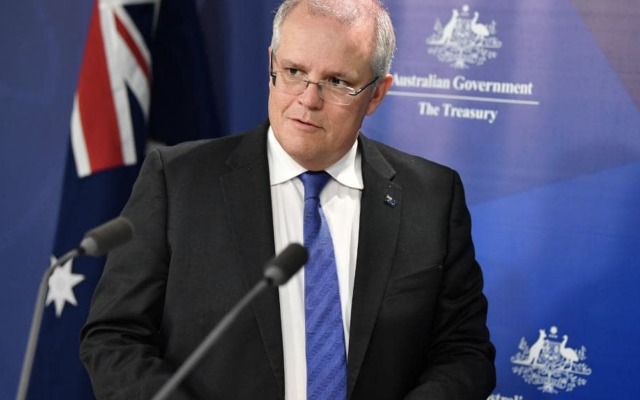Australia’s 2018 rich list highlights growing wealth and inequality

Number 1 and 3 on the 2018 Australian rich list: Anthony Pratt and Gina Rinehart.
The Financial Review’s 2018 rich list published yesterday revealed that 16 new names were added to the illustrious billionaires club this year, taking the total number of Australians worth more than A$1 billion to a record-breaking 76 people.
From a structural point of view, the top five industries in which the nation’s wealthiest 200 primarily made their fortunes are property (51 people), retail (22), investment (20), resources (18) and financial services (16).
Also, the number of Australian-based billionaires has swollen since the global financial crisis, from 14 in 2008 to 33 in 2018.
Pratt in pole position
Topping the list was recycling magnate Anthony Pratt who the Financial Review says has benefited from Donald Trump’s recent tax cuts to the tune of $100 million annually.
Mr Pratt is continuing to expand his cardboard and recycling plants across the US where profits continue to grow since he started the business in 1991. Mr Pratt’s total wealth is now estimated to be in the region of A$12.9 billion.
Hailing the apartment king
Not far behind Mr Pratt was Harry Triguboff, the property mogul.
Mr Triguboff celebrated his 85th birthday in March this year and has been christened “The Apartment King” by market commentators, for his leading role as Australia’s biggest individual owner and operator of hotel rooms, with about 4,500 in his portfolio.
Mr Triguboff is also credited with establishing Meriton (Australia’s largest apartment developer and also the country’s biggest residential home builder) way back in 1963. The company has built up quite a reputation and secured Mr Triguboff with 2nd place in Australia’s rich list with a total net wealth figure of $12.77 billion.
The rate at which Meriton has been buying up land around Sydney in recent months, such as an $80 million purchase of a council depot site in Zetland, (on which to build hundreds of apartments presumably), next year’s rich list could see Mr Triguboff top of the pile – as long as property prices remain buoyant and homebuyers continue stampeding for new stock in hotspots like Melbourne and Sydney.
Making up the rest of the top five are mining entrepreneur Gina Rinehart, property owner Hui Wing Mau and Westfield creator Frank Lowy.

The top 10 wealthiest Australians in 2018.
Routine table-topper James Packer, the majority shareholder of casino and entertainment group Crown Resorts only made 10th place in this year’s list.
Mr Packer raised more than a few eyebrows in March this year after announcing he would be stepping down as a director of Crown due to “mental health issues” and with intentions of stepping back from public life.
For now, he has taken one step back from last year’s 9th position, although it’s likely that his A$5.25 billion nest egg will help soothe his pain.
It is worth sparing a thought for James’ father Kerry Packer. Upon his unfortunate death in 2005, he had topped the ranks of BRW Rich list for 15 consecutive years, from 1990 onwards.
Quite a feat compared to modern times when rich list positioning is more akin to a long-distance horse race.
Hey big spender
As moguls on the rich list trade places from year to year, what doesn’t seem to change is the din of criticism levied at Australia’s wealthiest men and women coming from a variety of sources including Australia Institute’s Richard Denniss, who said that the prime reason why there were more billionaires than ever was because “inequality is on the rise”.
Mr Denniss also says that the majority of Australians remain hampered by slow wage growth.
“It is little wonder that inequality is on the rise and the biggest winner from all of this are billionaires, whose numbers are rapidly growing,” said Mr Denniss.
The top six richest Australians had a combined personal fortune of A$64 billion in 2018, which is roughly equivalent to what the bottom 20% of Australia (around 1.8 million people) is worth. In other words, the top 1% of Australians own more wealth than the bottom 70% combined (with the gap continuing to grow year upon year).
According to the Financial Review, the nation’s richest 200 people, held a record A$283 billion in wealth, up 21% from last year. Of the 200 names listed, the average wealth of Australia’s 200 richest people was $1.41 billion.
“Whether it is precarious work, sluggish wages growth or rapidly rising house prices, there are a growing number of Australians who are becoming increasingly angry at the fact that they’re missing out,” said Mr Denniss.
With fortunes rising and percolating into fewer hands whilst the public majority getting angrier at the staggering levels of inequality pervading Australia, it would seem Australia’s Treasury and its public figurehead Scott Morrison staunchly disagrees.

Federal Treasurer Scott Morrison believes income inequality is not an issue in Australia.
In September last year, Mr Morrison said that “income inequality was not getting worse in Australia”, with a Treasury report saying that the lowest 10% of Australian earners have experienced the fifth highest income growth in the OECD, at 3% per year, which indicates “strong growth across the income distribution” spectrum and “sets Australia apart from other OECD countries”.
Less than 1 month since making his speech to the Business Council of Australia the International Monetary Fund said Australia has one of the fastest rising income inequality rates and that the country is among “countries with the highest growth in income inequality in the world over the past 30 years”.
Despite the variable rates of income (and net wealth), it would seem that wealth remains in the eye of the beholder, regardless of the numbers being flaunted.
